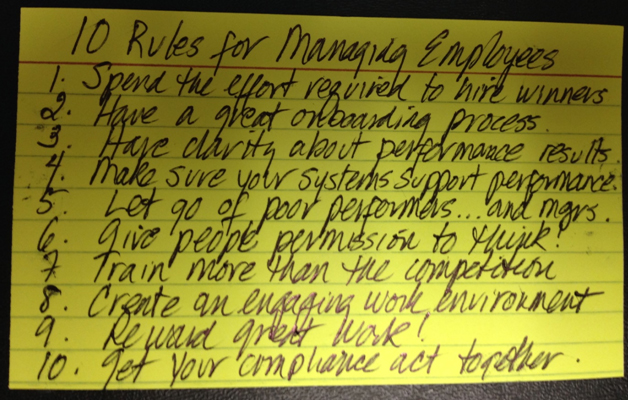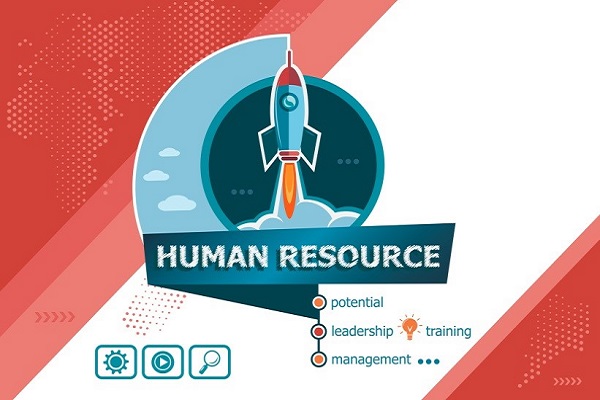Here’s 10 Great HR Ideas You Can Use Today
I love creativity. Disruption. Differentiation. In fact, I’m going to be the MC for the next DisruptHR meeting in San Diego.
HR has a great opportunity to break past the status quo and to test new theories, strategies and tools. Here’s 10 ideas I came up with. What would you add to the list? Do tell!
1. Request every job application to submit a joke with their resume. I am serious about this. If they don’t do so they can’t follow instructions and you don’t hire them. Then there are those who will provide jokes that put them on the do not hire pile immediately. For most everyone else, you at least have a laugh while going through that stack of resumes and you will learn a little bit more about the candidate.
2. Create an employee referral system that works. Most employee referral systems don’t work for two good reasons: there’s not enough “juice” in them and it comes with little support. You have to make it easy for employees to refer candidates with a one page document they can hand them or a link they can drive them to. Then put some financial “juice” in the system that gets them past the fear of referring someone. I would consider as much as 10% of that employers first year salary, which is far less than you would pay a recruiter or temp firm. Parcel the payments out quarterly over the year if the employee remains on board.
3. Do group interviews with final candidates. I like seeing how people work in a team dynamic. Have three potential coworkers interview the final three candidates… all at once. Each employee will ask each candidate three questions. You are not just focusing on the answers but how the candidates treat each other while going through that process. Will they through somebody under the bus? Will they raise their voice and disagree? The best thing you can do is have fun sitting back and watching it unfold. It will tell you how they will treat future co-workers. As with any of these ideas just test it once. See how it works. Then improve it from there.
4. Ask my favorite interview question – what felt unfair to you at your last job? And then drill into the answers. How they respond will indicate how they will deal with something that feels unfair working for you. Which is guaranteed to happen. I will go through a candidate’s entire history with that question. Doing so has eliminated many a candidate. And… don’t forget to ask what they were most excited about in previous jobs.
5. Create a social media committee. Millennial’s will be great in this role. Provide them with some simple rules to follow and then let them do their thing. They can help your employer brand on Glassdoor, Indeed, your hiring page, Facebook page and more!
6. Ask your managers to take on a very simple challenge: for the next 20 workdays, beginning on a Monday, they are required to show at least one employee they manage that they care about them. You can discuss their family, upcoming vacation, or job concerns. Provide the manager a simple form where they can write down each day who they spoke to and what they did to show they care. Then he asked them to turn it in after 20 days and have a discussion with them about what they learned in the process. What great ideas can be shared with other managers? Make sure you commit to the exercise as well. Perhaps have fun prizes along the way.
7. Create an art wall. You can decorate it with pictures and paintings from local artists, your employees, and their kids. It will breathe creativity into the environment. Besides, you can’t be funked out very long looking at kids art.
8. Have a Red Nose Day. While the official date is May 25, the better one is any day you choose. Red noses are cheap on Amazon and it will generate many laughs. Give the employees a few to take home too. I find it’s very difficult to take yourself or anyone else seriously while wearing a red nose. Make sure to gets lots of selfies to post!
9. Create a quiet hour. Preferably early in the morning when people are at the sharpest so they can focus on the most important tasks. Prohibit “stopping by”, emailing or otherwise interrupting the quiet unless it is an urgent and important matter.
10. Make fun T-shirts for your employees. Let them get involved in the design. Have a contest. Employees will design a shirt they want to wear outside of the workplace. This is a low-cost way of engaging and branding your workforce.
Those are just 10 of my Great HR ideas. What are a few of yours? What have you done that is cool, disruptive or different?
Please share and I will accumulate the responses. Once I have received 100 combined I will send that document to all contributors. You want to be on that list.
PS this list is derived from the Great HR program. Plenty of more where they came from…and now we will generate even more.



